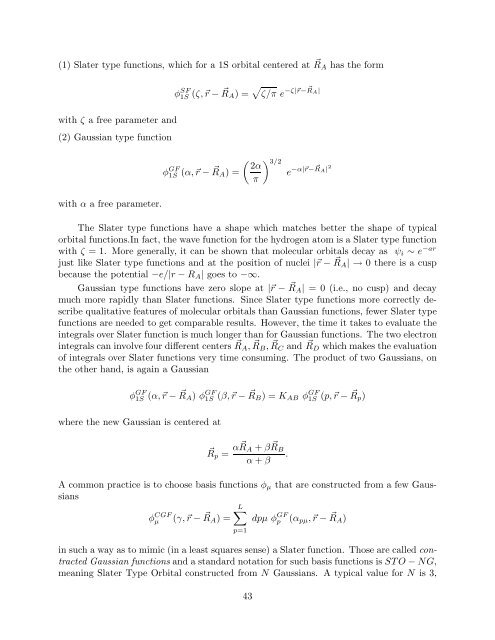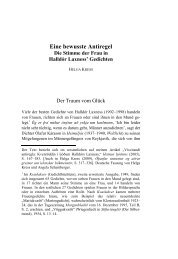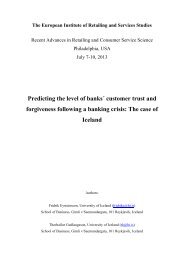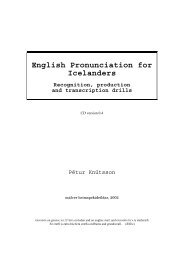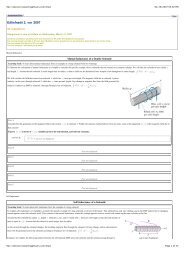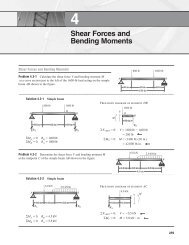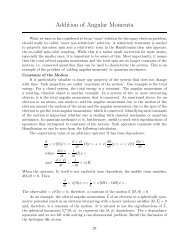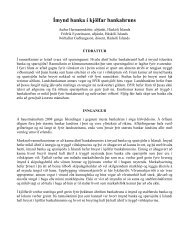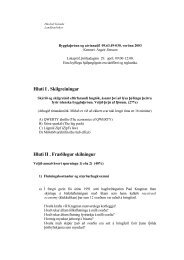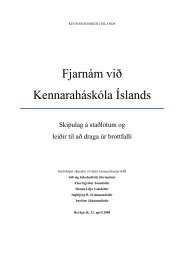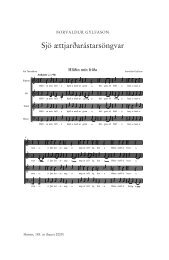The Hartree-Fock approximation underlies the most commonly used ...
The Hartree-Fock approximation underlies the most commonly used ...
The Hartree-Fock approximation underlies the most commonly used ...
You also want an ePaper? Increase the reach of your titles
YUMPU automatically turns print PDFs into web optimized ePapers that Google loves.
(1) Slater type functions, which for a 1S orbital centered at RA has <strong>the</strong> form<br />
with ζ a free parameter and<br />
(2) Gaussian type function<br />
with α a free parameter.<br />
φ SF<br />
1S (ζ,r − RA) = ζ/π e −ζ|r− RA|<br />
φ GF<br />
1S (α,r − RA) =<br />
3/2 2α<br />
π<br />
e −α|r− RA| 2<br />
<strong>The</strong> Slater type functions have a shape which matches better <strong>the</strong> shape of typical<br />
orbital functions.In fact, <strong>the</strong> wave function for <strong>the</strong> hydrogen atom is a Slater type function<br />
with ζ = 1. More generally, it can be shown that molecular orbitals decay as ψi ∼ e −ar<br />
just like Slater type functions and at <strong>the</strong> position of nuclei |r − RA| → 0 <strong>the</strong>re is a cusp<br />
because <strong>the</strong> potential −e/|r − RA| goes to −∞.<br />
Gaussian type functions have zero slope at |r − RA| = 0 (i.e., no cusp) and decay<br />
much more rapidly than Slater functions. Since Slater type functions more correctly describe<br />
qualitative features of molecular orbitals than Gaussian functions, fewer Slater type<br />
functions are needed to get comparable results. However, <strong>the</strong> time it takes to evaluate <strong>the</strong><br />
integrals over Slater function is much longer than for Gaussian functions. <strong>The</strong> two electron<br />
integrals can involve four different centers RA, RB, RC and RD which makes <strong>the</strong> evaluation<br />
of integrals over Slater functions very time consuming. <strong>The</strong> product of two Gaussians, on<br />
<strong>the</strong> o<strong>the</strong>r hand, is again a Gaussian<br />
φ GF<br />
1S (α,r − RA) φ GF<br />
1S (β,r − RB) = KAB φ GF<br />
1S (p,r − Rp)<br />
where <strong>the</strong> new Gaussian is centered at<br />
Rp = α RA + β RB<br />
.<br />
α + β<br />
A common practice is to choose basis functions φµ that are constructed from a few Gaussians<br />
φ CGF<br />
µ (γ,r − L<br />
RA) = dpµ φ GF<br />
p (αpµ,r − RA)<br />
p=1<br />
in such a way as to mimic (in a least squares sense) a Slater function. Those are called contracted<br />
Gaussian functions and a standard notation for such basis functions is STO − NG,<br />
meaning Slater Type Orbital constructed from N Gaussians. A typical value for N is 3,<br />
43


